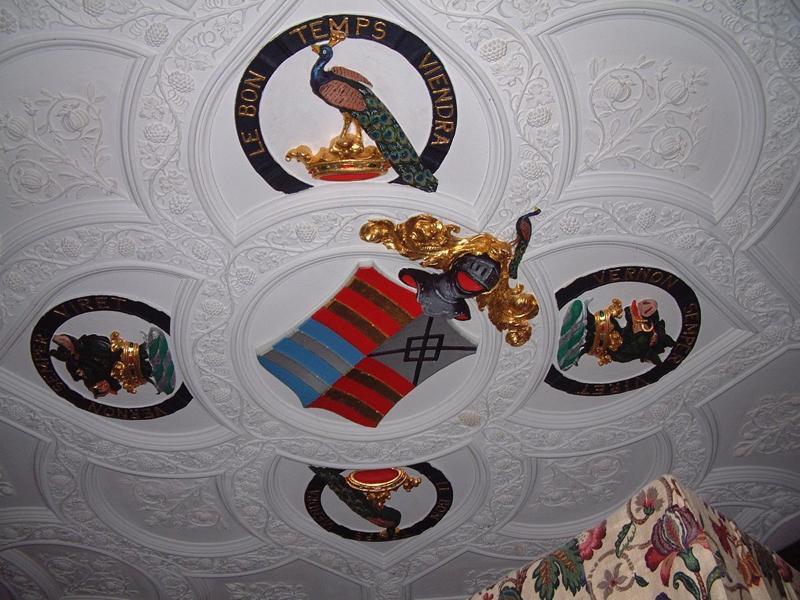


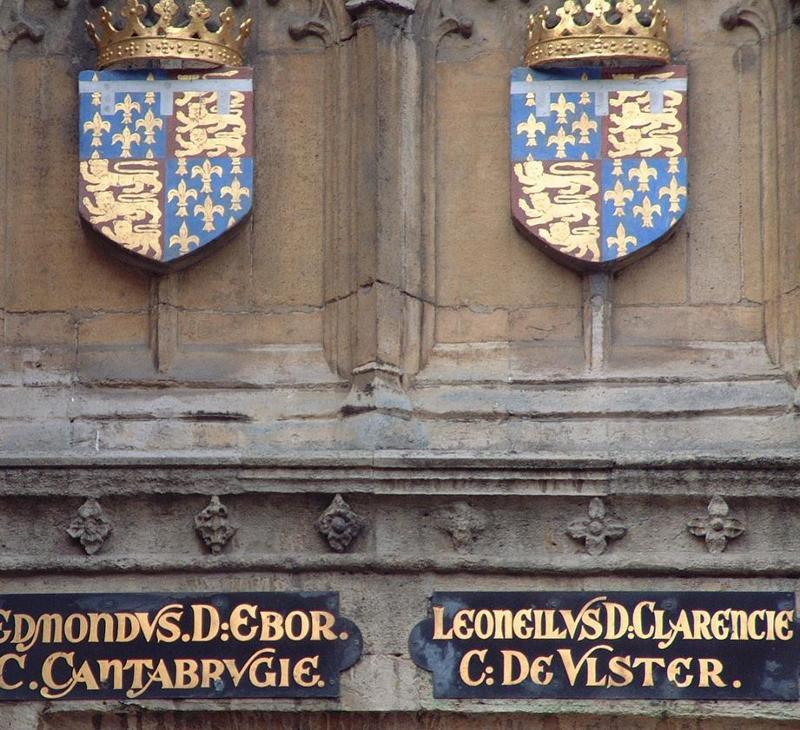




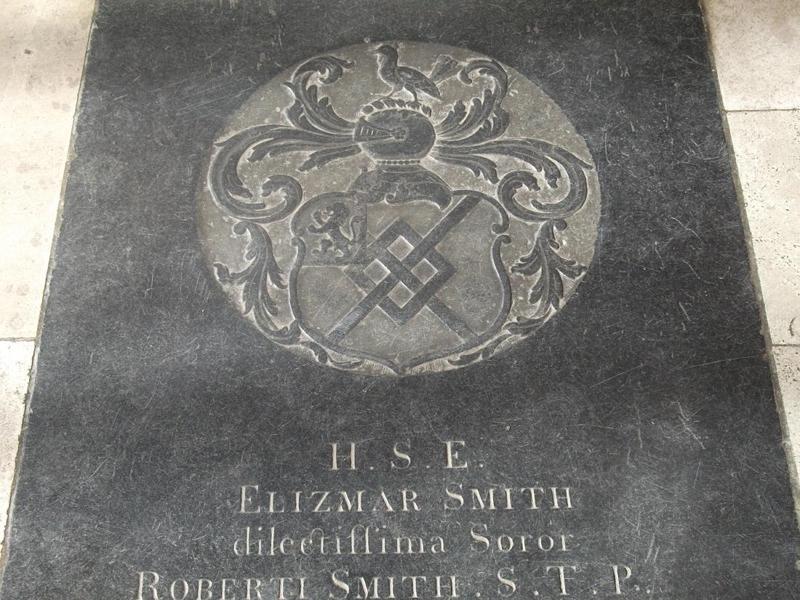
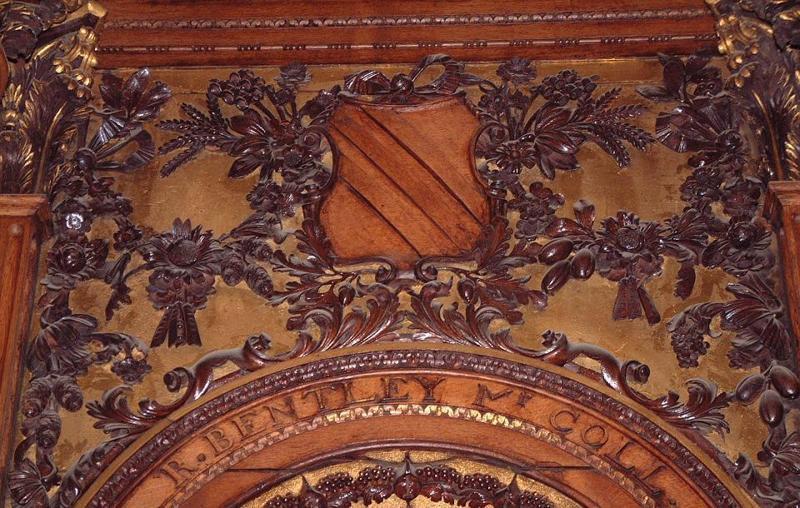

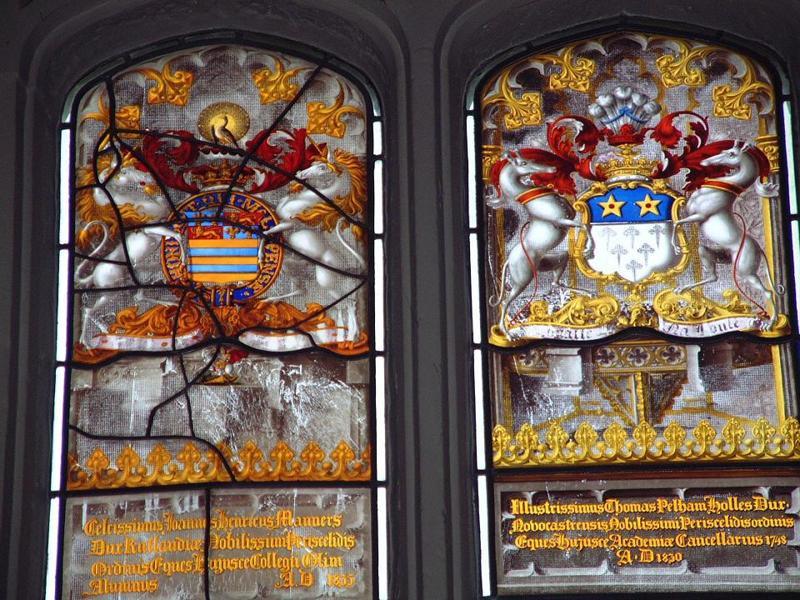

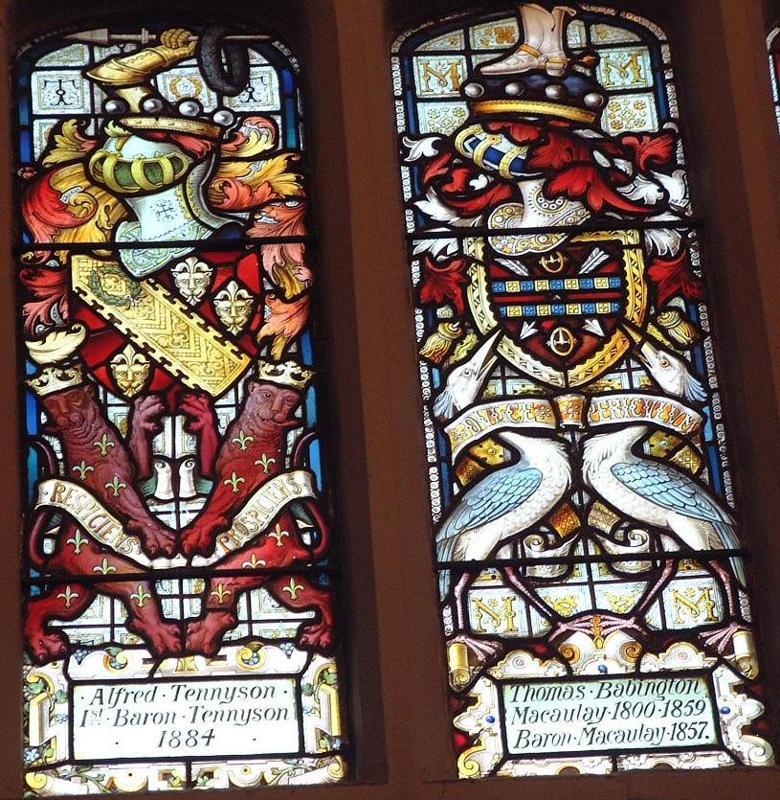
The glass in the Hall at Trinity commemorates politicians, judges, bishops, scientists, poets and historians. To the left the arms of Alfred Lord Tennyson (1809-92) who came up to Trinity in 1827, he won the Chancellor's medal for a poem in 1829 but his father's death in 1831 meant he had to leave Cambridge without taking a degree. After achieving fame and fortune he twice declined a baronetcy eventually accepting a barony from Gladstone in 1884.
Thomas Babington 1st Lord Macaulay (1800-59) was educated at Trinity between 1817 and 1821 winning the Chancellor’s Gold Medal and many other prizes for poetry. In 1830 he was elected an MP and spoke in favour of parliamentary reform. He was Secretary to the Board of Control 1832 to 1833. In 1834 he went to India and served on the Supreme Council 1834 to 38, on the voyage home he learned German. A year after returning to Parliament in 1838 he was made Secretary at War. He was defeated as MP for Edinburgh but re-elected in 1852, resigning in 1856. Macaulay was a founder Trustee of the National Portrait Gallery. He was created a baron in 1857 but died two years later. As an author he was most famous for the “Lays of Ancient Rome” a collection of ballads that included “Horatius and the Bridge”. He published the first two volumes of his “History of England from the Accession of James the Second” in 1848 and two more in 1855. He died before he could complete it, the series being completed by his sister Lady Trevelyan. Both of these arms illustrate the rather puzzling decision of the artist to include the coronet of rank (in this case baron) as part of the crest and not sitting on top of the shield with the helmet sitting within it. It has the unfortunate affect a making the crest top heavy and, at times, simply ridiculous. Coronets (unless specifically mentioned in the grant of arms) should not be included where they don’t belong.

